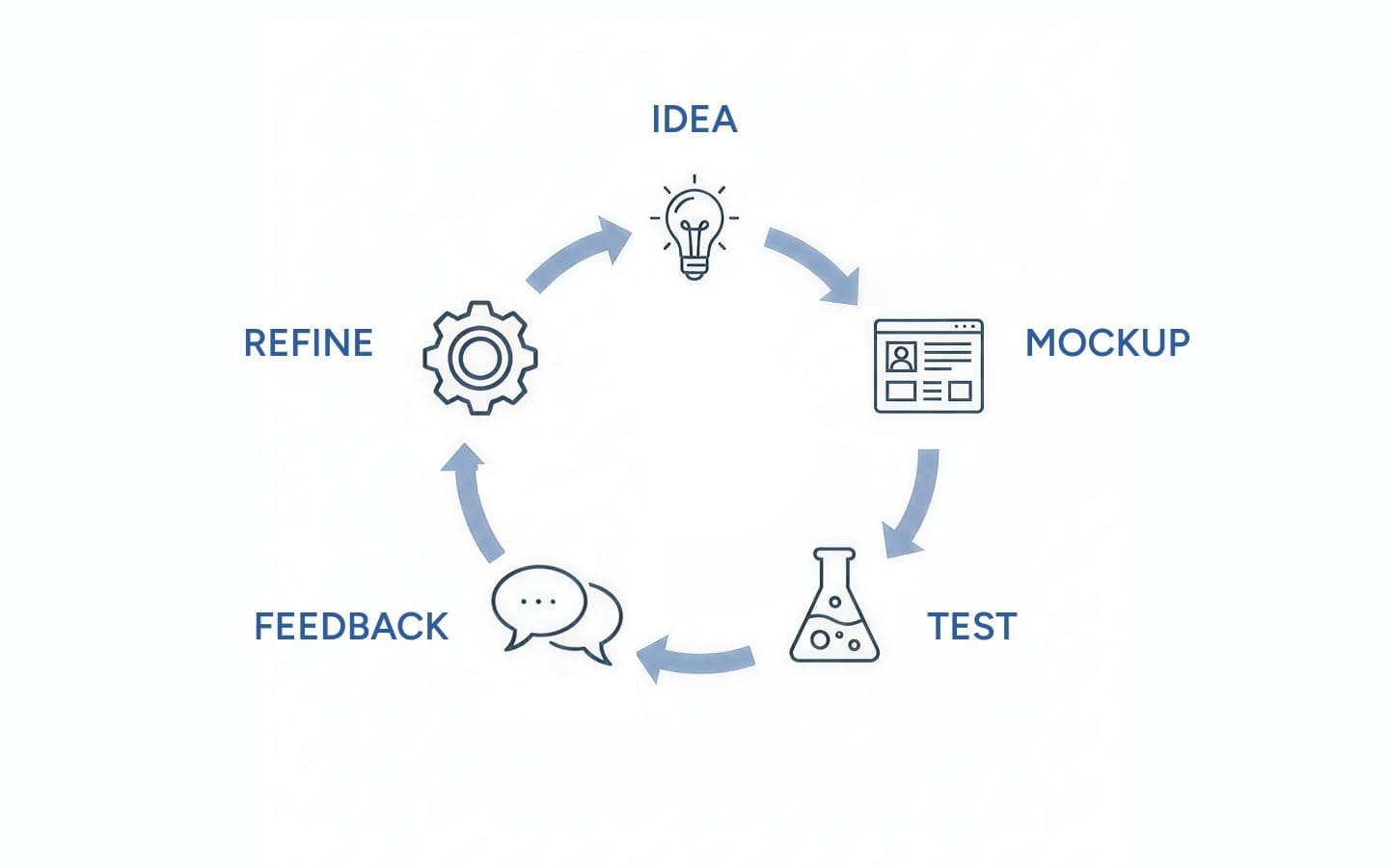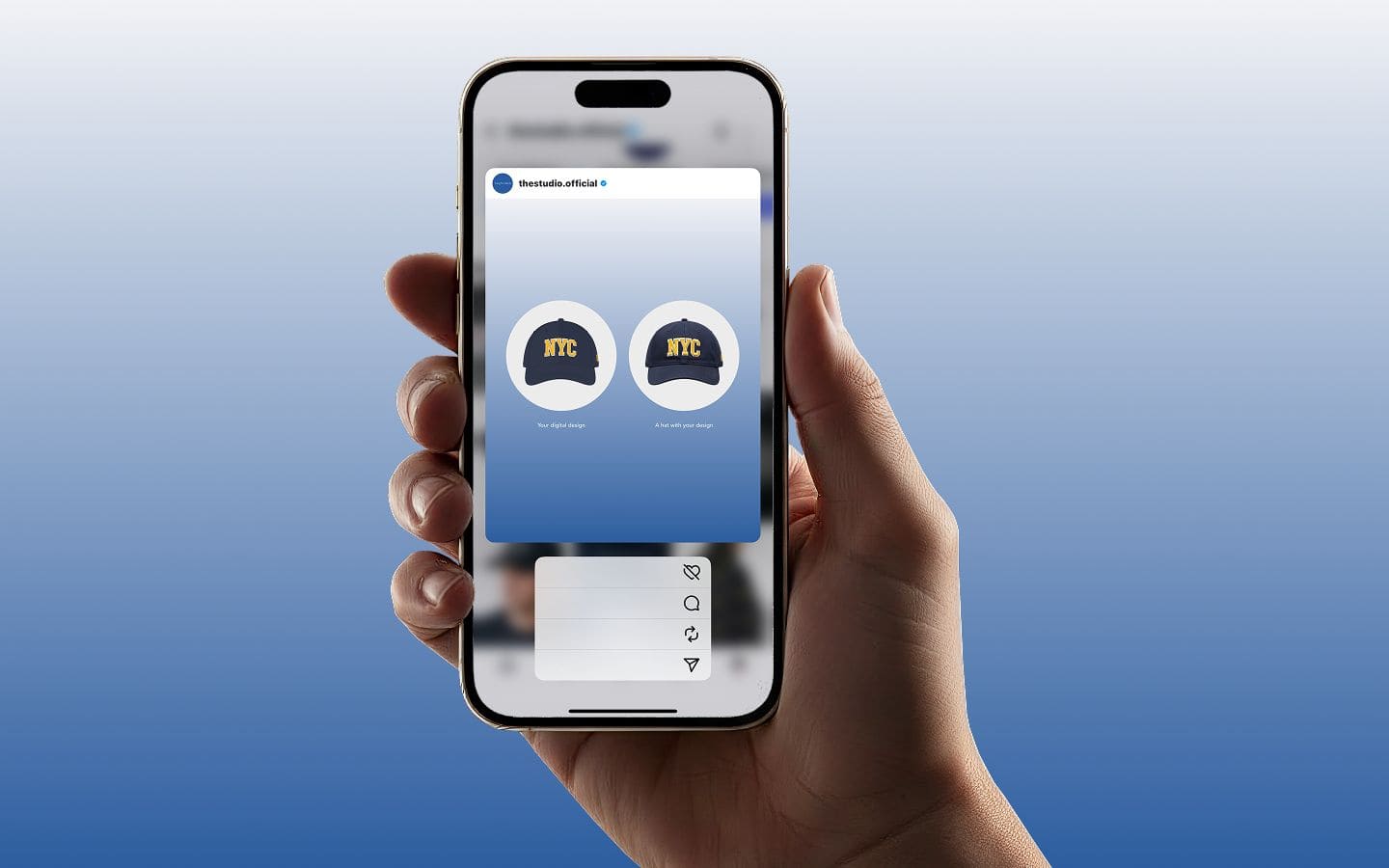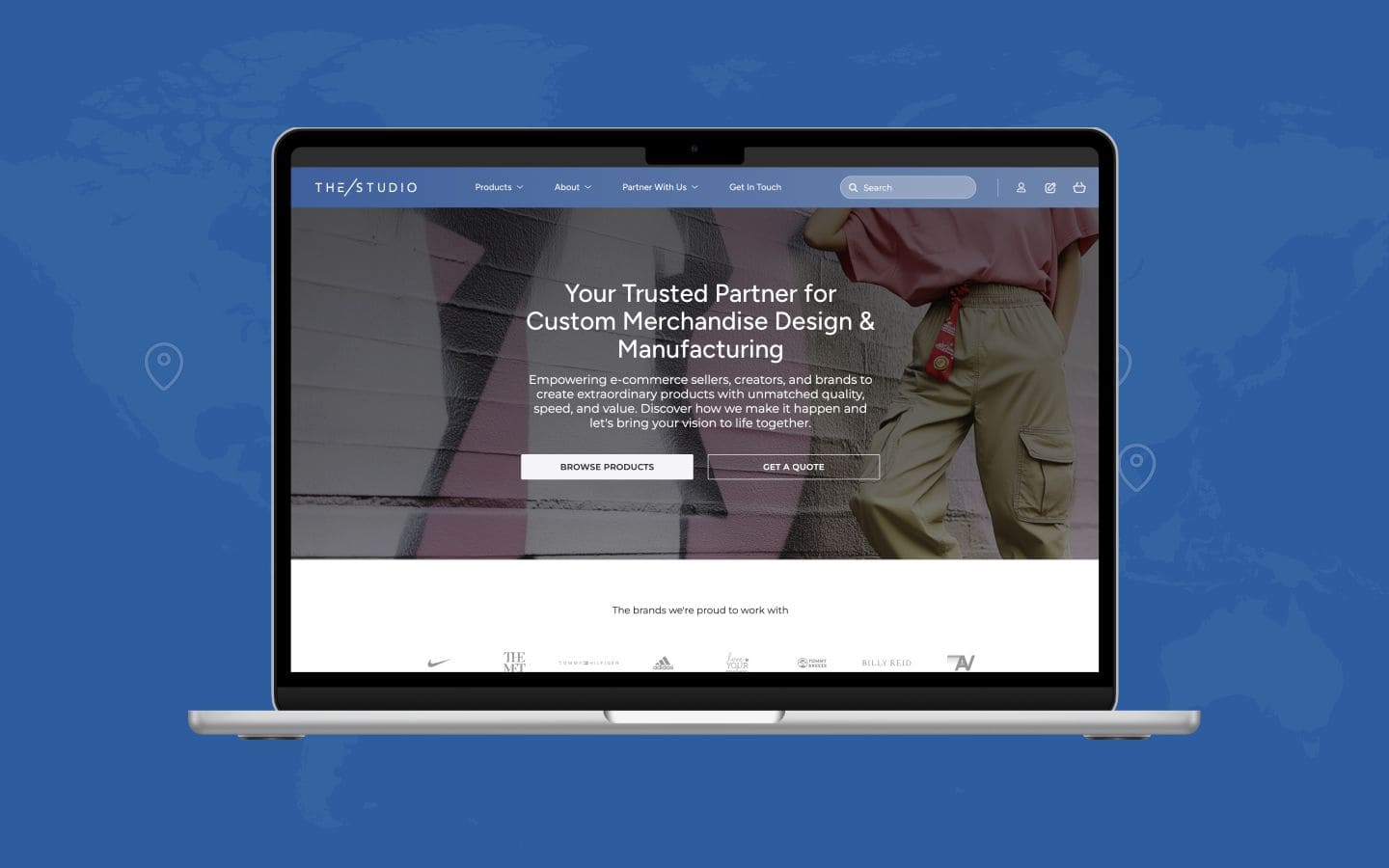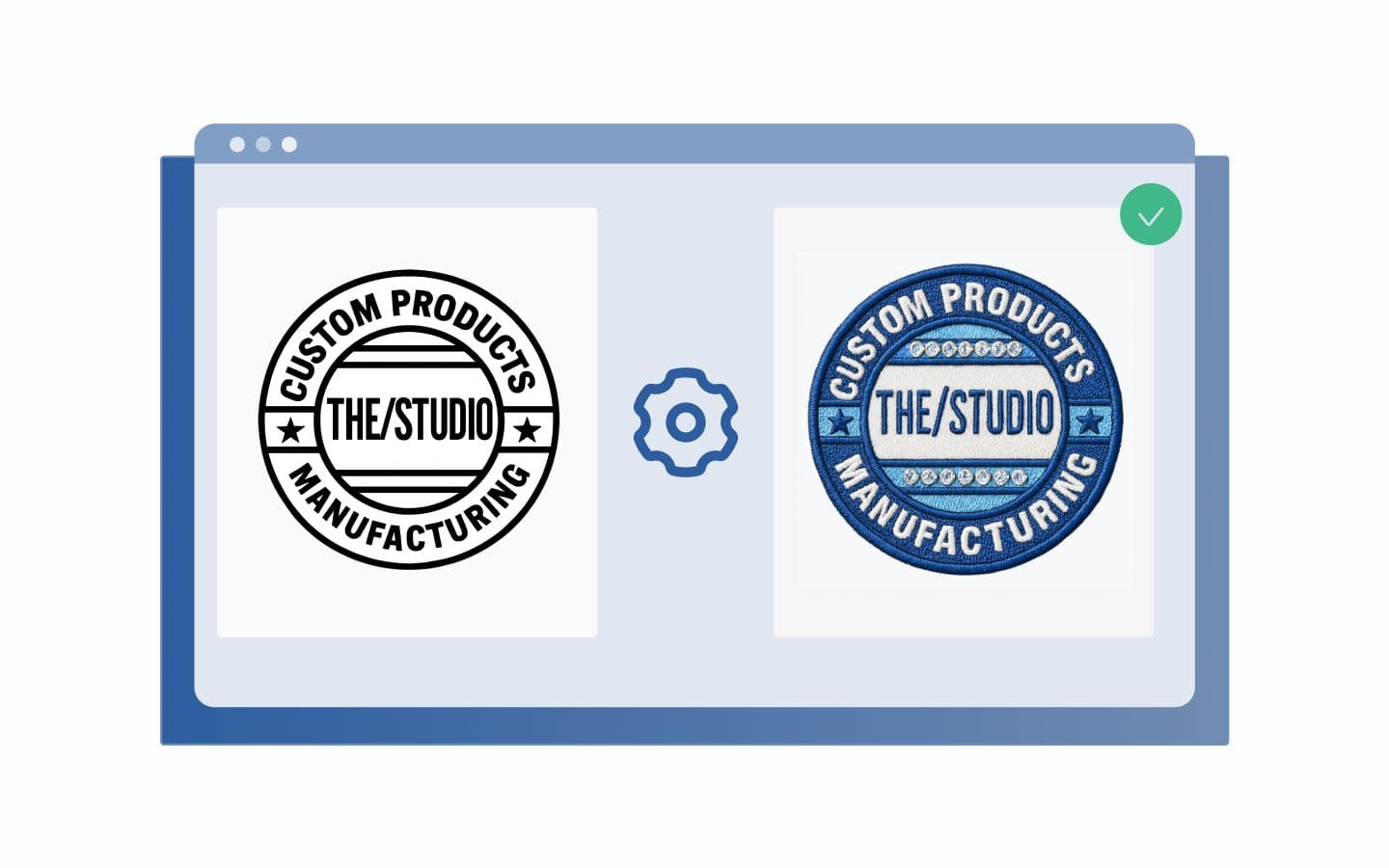How to validate a product idea: complete guide
A significant reason for startups to fail is misunderstanding the market demand. Studies show that only one-third of businesses survive over a decade.
Product validation helps minimize risks of failure and ensure there’s a market demand for what you’re launching. With modern tools, such as AI, you can even validate your product idea for $0.
Key takeaways:
Testing your idea early saves money, time and effort by confirming real market demand.
AI mockups make product validation faster and more affordable than ever.
Combine creative tools with manufacturing platforms like THE/STUDIO to test and launch faster.

What is product idea validation?
Product idea validation is the process of testing whether your product concept has real market demand before committing significant resources to development.
Instead of guessing, you gather data through mockups, prototypes, surveys, or pre-orders to confirm if customers are truly interested.
In short, validation helps you answer the question: will people actually buy this?
Why validate product ideas before building them?
Skipping validation can be costly. Many entrepreneurs spend thousands on product design, packaging, and supply chains before they know if anyone will actually want the product.
Validating early helps you:
Save money and time by avoiding costly missteps.
Understand your audience and their preferences.
Build confidence in your product before scaling.
With AI, you can test multiple concepts quickly, as it helps you create digital mockups in minutes. Countless brands use validation to refine their ideas, whether it’s a lifestyle brand testing packaging concepts or an established company preparing for a major launch.
The product validation process
While every brand’s journey is different, most validation follows these steps:
Define your product idea clearly: Write down the problem your product solves and who it serves.
Create mockups or prototypes: Use AI or digital design tools to test packaging and product concepts. You can even use services like THE/STUDIO to create small-batch prototypes for real-world testing.
Test with your target audience: Share images, videos, or prototypes on social media, email lists, or crowdfunding platforms to gauge their response.
Measure engagement and intent to buy: Look for more than “likes.” Do people sign up, pre-order, or show real purchasing intent?
Refine based on feedback: Adjust designs, features, or positioning before committing to production.

Strategies to validate a product idea
Run surveys and interviews: Ask your target audience if they’d buy your product and why.
Social media mockups: Use AI to generate realistic product images and test engagement.
Landing pages: Build a simple site describing your product and track sign-ups.
Crowdfunding campaigns: Platforms like Kickstarter are built-in validation tools.
Pre-orders: Offer your product for sale before it exists; if demand is strong, move to production.
Small-batch manufacturing: With partners like THE/STUDIO, you can produce custom products in limited runs to test the market without high upfront costs.
💡 For further inspiration on products to launch, check out our compilation of 4 innovative product line extensions.
Frequently asked questions
How do you validate a product idea?
You validate a product by testing it with real potential customers. This can be done with mockups, surveys, prototypes, or pre-orders to measure genuine demand.
Beyond testing, it’s important to collect both qualitative and quantitative feedback. Metrics like sign-up rates, conversion percentages, and customer interviews help you understand not only if people are interested, but also why they are (or aren’t).
Why is product validation important?
Validation prevents wasted time and money, ensures your product solves a real need, and gives you confidence before scaling production. By validating before investing heavily, you increase the likelihood of a successful launch.
It also gives you an opportunity to fine-tune your messaging, pricing, and features so that your product resonates more strongly with your audience.
What is product demand validation?
It’s the process of confirming that there is actual customer demand for your product, not just interest. Demand is best proven through pre-orders or real sales.
Unlike surface-level engagement (likes, comments, or clicks), demand validation focuses on actions tied to commitment.
When customers are willing to pay, or at least provide detailed feedback, you gain stronger proof that your idea has market potential.
Who is responsible for the company’s product validation?
Typically, product managers, founders, or brand owners lead validation strategies. Marketing, design, and manufacturing teams often play a critical role as well.
However, successful validation is cross-functional. Customer support, analytics, and even finance teams can add valuable insights to ensure the product fits the market and is financially viable before scaling production.
What tools can help with product validation?
AI mockup generators, survey platforms, crowdfunding sites, landing page builders, and manufacturing platforms are all powerful tools.
The best approach is often to combine tools:
Use AI to visualize your product,
Landing pages to capture interest,
Crowdfunding or small-batch production to measure true market demand.
Together, they give you a 360-degree view of whether your product idea is worth pursuing.

How to conduct product validation?
Start with small, low-cost tests such as mockups, surveys, and pre-orders. Collect data, refine your idea, and only then invest in prototyping or manufacturing.
Think of validation as an iterative process, not a one-time step. Launch tests, analyze results, make adjustments, and repeat. Each cycle gets you closer to a product that customers will love and are ready to buy.
Why is AI a game-changer for product validation?
AI allows entrepreneurs and brands to create realistic product mockups, packaging designs, and even marketing campaigns in minutes at little to no cost.
Instead of spending months and thousands of dollars on prototyping, you can test dozens of ideas quickly and see which ones resonate with your target audience.

Final thoughts
Validating a product idea is one of the smartest steps you can take before committing to full-scale production. By testing concepts early, whether through AI-generated mockups, customer surveys, or small-batch prototypes, you minimize risk and maximize your chances of success.
The key is to gather real signals of demand, not just interest. Pre-orders, sign-ups, and engaged feedback give you the confidence that your product can thrive in the market. And with today’s tools, you don’t need to spend months or thousands of dollars before knowing if your idea has potential.
At THE/STUDIO, we’ve seen firsthand how validation transforms good ideas into great businesses. Whether you’re starting a lifestyle brand or expanding an existing product line, combining creative tools like AI with small-batch manufacturing gives you the flexibility to test, refine, and launch with confidence.
Product validation isn’t about slowing you down. It protects your time, energy, and resources, making sure every step you take moves you closer to building something your customers truly want.
For further reading on issues that businesses face, check out our guide on the most common reasons for production delays and how to avoid them.





